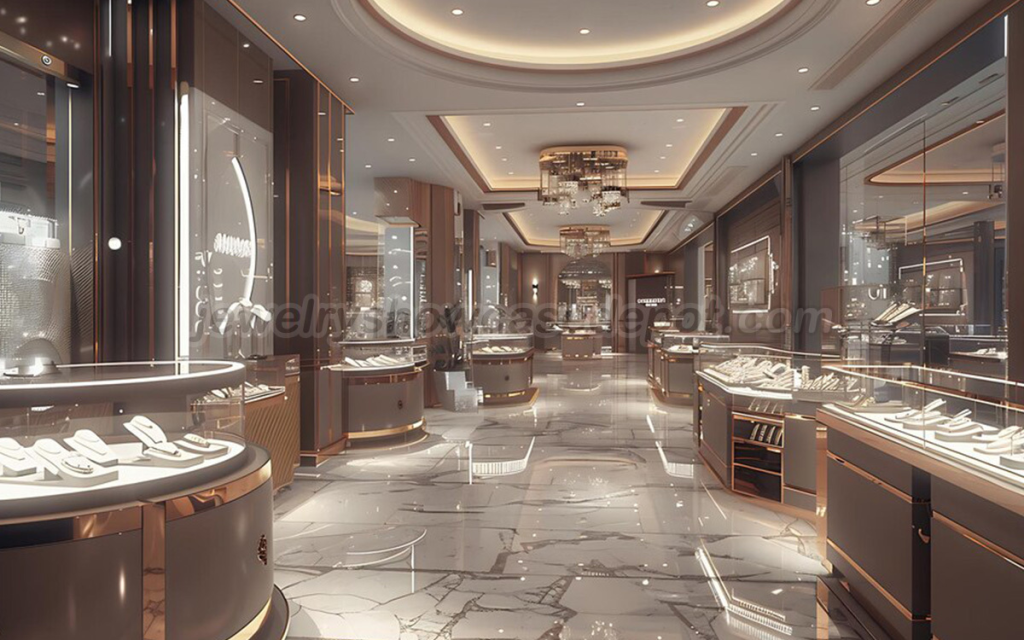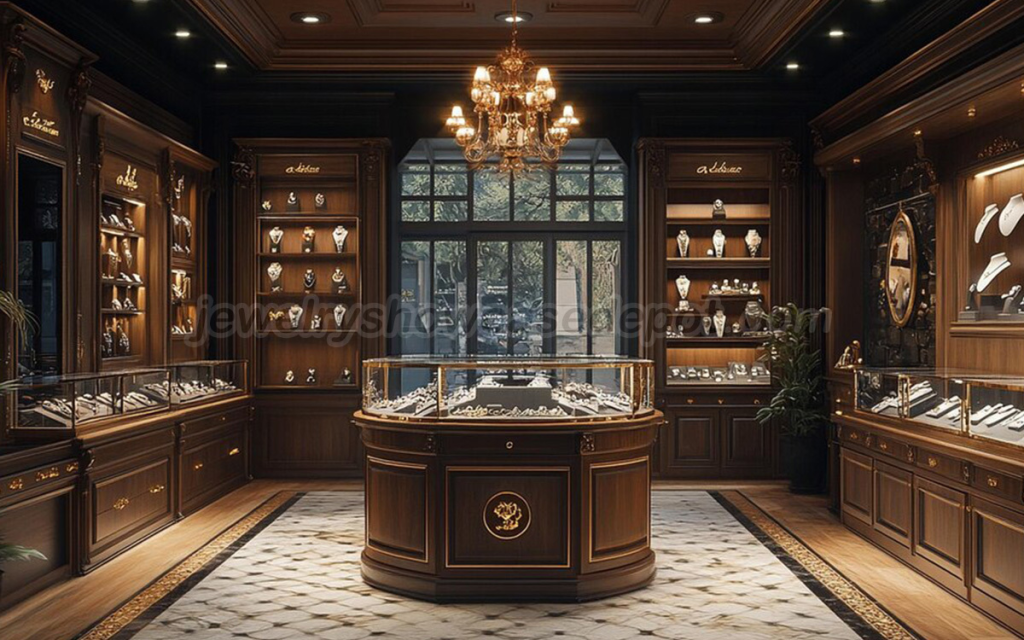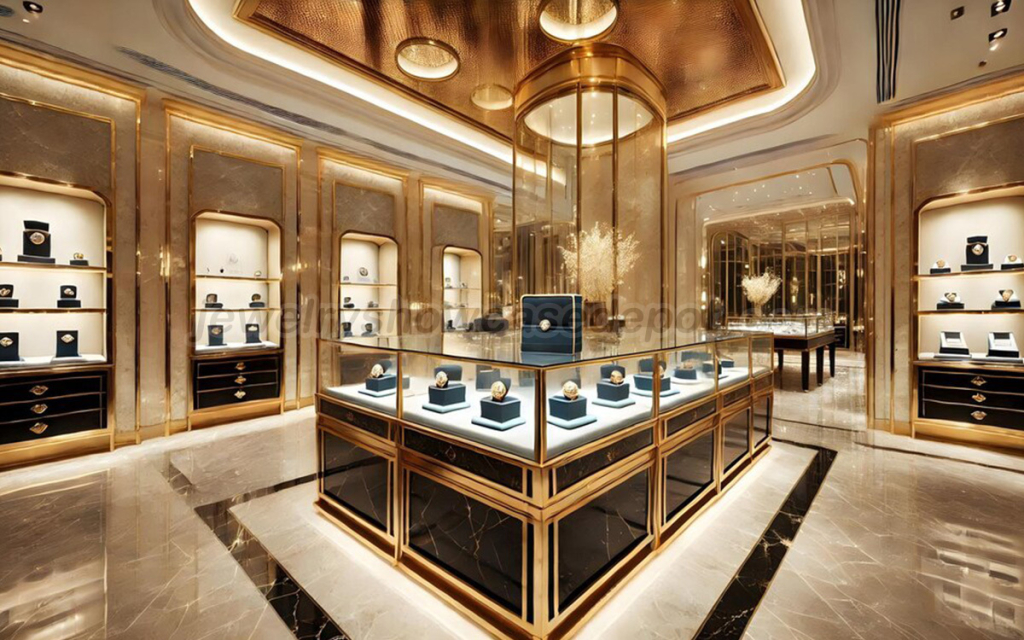
Jewelry retail is an experience rooted in craftsmanship, luxury, and sentiment; every piece holds a story that must be told. A display case serves more than simply as storage – it acts as silent salesperson promoting beauty whilst creating an interaction between product and customer. An effective jewelry display case has the power to transform even an ordinary necklace or diamond ring into something desirable, inspiring customers to envision it as theirs and imagine its existence as part of their collection. Display cases play an integral part in creating customer experiences, building brand identities, and increasing sales. This article delves deep into this multifaceted world of jewelry display cases by exploring their significance, design principles, material selections, lighting techniques and maintenance practices.
At first glance, jewelry display cases may seem like functional items but their impact on retail success is immense. Jewelry is an exceptionally valuable product that requires customers to feel its quality, touch its details, and connect with its aesthetic before they purchase anything from it. A poorly designed case may obscure a piece’s brilliance or convey a cheapness that undercuts its value; in contrast a carefully crafted case adds allure while creating exclusivity and creating trust between customer and product.
One of the primary functions of a jewelry display case is protection. Precious metals and gemstones can easily become damaged from dust, moisture, fingerprints and theft; to safeguard these valuable pieces effectively retailers and customers need secure locks with scratch-resistant glass, secure locks for sensitive pieces like pearls as well as climate control features to keep their valuable items secure – cases featuring tempered glass provide crystal-clear visibility so customers can appreciate every facet of a diamond without obstruction from shattering.
Display cases can also serve as tools of storytelling and branding for jewelry brands, whether luxury or boho-chic in nature. A luxury brand might opt for display cases featuring sleek designs with gold accents to reflect their Gao Duan (high-end) identity; for a bohemian brand using cases made of reclaimed wood with soft lighting to convey more eclectic artisanal vibe. Case designs should match up with brand personality to ensure an in-store experience that resonates with customers; when customers see jewelry displayed “on brand” they’ll more likely perceive pieces as authentic and desirable pieces than otherwise.
Display cases have a profound effect on customer engagement and sales. A well-organized case with strategic placement – grouping matching sets together, showcasing bestsellers at eye level or using props like velvet cushions or silk ribbons to add texture – encourages customers to linger and explore. Placing an illuminated statement necklace at the center of a case with soft lighting may draw customers’ eyes immediately; prompting them to ask for closer looks from store staff members. When customers can easily interact with jewelry (with assistance from store staff of course), more likely they develop emotional connections to pieces, increasing chances of sales.
1.Design Elements for Effective Jewelry Display Cases
Crafting effective jewelry display cases involves striking the ideal balance between aesthetics, functionality and customer experience. There are various key elements which come together to produce cases which not only look aesthetically pleasing but also fulfill their intended function efficiently.
1) Visibility: Clear Views of Every Detail Visibility is one of the key aspects of jewelry display cases, as customers should be able to see every element from cut of diamond to intricate engravings without straining their eyes. To do this, cases typically feature large panels of high-quality glass such as tempered or ultra-clear (to reduce glare and distortion). The glass should be thick enough for durability without distorting the view of jewelry inside; also, any obstructions in its structure should be minimized as much as possible; thin metal frames (rather than thick wooden ones) or frameless designs can maximize viewing area by giving customers access from multiple angles.
2) Layout in a case is also key to visibility; overcrowding it with too many items can make it hard for customers to distinguish individual pieces, leading to decision fatigue. Instead, retailers should adopt a “less is more” strategy where there’s enough space between pieces that each one stands out uniquely; for instance, an engagement ring case might display just 5-7 rings at any one time placed individually onto velvet cushions versus piling 20 together for easier viewing and giving each ring an exclusive feeling.

2. Lighting Enhancing Sparkle and Color
Lighting is perhaps the single most transformative aspect of a jewelry display case. Proper illumination can make a diamond sparkle more brightly, enhance a ruby’s vibrant hue or bring out its warm tone in gold necklace. Conversely, however, harsh fluorescent lights could wash away colors, cast unflattering shadows or cause gemstones to look lifeless.
Lighting jewelry display cases effectively requires soft lighting that’s warm in tone and directional in direction. LED lights are popular choice as they emit minimal heat (preventing damage to fragile jewelry like pearls or enamel), save energy, and can be configured with different color temperatures for display cases. For most jewelry pieces, a color temperature between 2700K-3000K (warm white) works best, as this approximates natural sunlight and draws out both the warmth of metals and gemstones’ vibrant hues. Directed lighting such as small LED spotlights or strip lights placed around the case’s edges can be used to direct attention toward specific pieces, highlighting their brilliance. For instance, lighting directly pointed at a diamond ring will highlight its brilliance by reflecting light off its facets – making it stand out amongst its peers in the case.
Glare must also be avoided to make viewing easier; light reflecting off jewelry or glass surfaces can obscure details for customers, making it hard for them to discern details. To reduce glare, retailers can install anti-glare glass case panels and angle lighting slightly downward instead of directly shining upon it. Likewise, placing the case out of direct sunlight (which fades gemstones over time) and dimming lights later in the evening for an intimate atmosphere can further enhance customer viewing experiences.
3. Material: Balancing Aesthetics and Durability
A jewelry display case’s material impacts its durability as well as aesthetic appeal, with metal, wood, glass, and acrylic being popular options with distinct advantages for various uses.
Metal frames (usually aluminum, stainless steel or brass) are popular due to their durability, sleek appearance and versatility. Aluminum is lightweight and resistant to rusting, making it suitable for cases that must be moved regularly; stainless steel provides a modern industrial aesthetic while adding warmth; while brass adds luxury and warmth making it the go-to material for high-end jewelry stores. Metal frames come in various finishes like matte black, polished silver or brushed gold depending on what fits the brand best.
Wood: Wood provides jewelry display cases with warmth, tradition, and craftsmanship – which makes it popular with brands that aim to convey classic or artisanal identities like antique stores or handcrafted piece makers. Hardwoods like oak, walnut or mahogany provide durability while their rich grains add texture. However, wood requires more maintenance than metal; it scratches easily and moisture damage can cause permanent damage; therefore it’s wise to apply protective finishes such as polyurethane sealant before placing in humid environments.
Glass/Acrylic: While glass is typically preferred for viewing panels, acrylic (a lightweight, shatter-resistant plastic) may also be an ideal solution in high traffic areas or brands prioritizing portability. Acrylic may be less likely to break than glass but scratches more easily so should be cleaned using nonabrasive products; luxury brands, however, prefer glass for its premium appearance and clarity.
Velvet is a classic choice when selecting Chen Dian (padding). Soft and luxurious, velvet offers a range of colors (black, burgundy and navy) that perfectly compliment jewelry pieces while protecting them from scratches and keeping pieces secure in their place. Suede or silk may provide more modern looks while leather adds an opulent aesthetic for high-end pieces such as designer watches or necklaces.

4. Security: Securing Valuable Inventory
A high value item like jewelry demands exceptional security measures from its display case design, so retailers must invest in solutions that deter theft while still allowing customers to view and interact with it.
Key security features of cases include secure locks. Most models use keylocks, while high-end models may use electronic locks with keypad access or RFID technology for added protection. It is best to find durable yet discrete locks to maintain aesthetics of case designs. Furthermore, its structure must be strong: thick metal frames or reinforced glass can help deter break-ins; some cases even come equipped with tamper-proof hinges that make prying open more difficult for thieves.
Stores with high-value inventory should install alarm systems into their display cases for additional protection. These alarm systems will trigger when someone opens or breaks into their case without authorization, or breaks its glass surface. Some models also include cameras or sensors to notify staff if someone lingers too long near it or attempts to break in through its lock.
Finding the Right Jewelry Display Case for Your Store
With so many choices available to you, finding a suitable jewelry display case may seem like an overwhelming task. When making this decision, be mindful of your store’s specific requirements such as its brand identity, the type of jewelry sold therein, available space available for display and budget constraints.
As previously discussed, your display case should reflect your brand identity and customer base. If you sell luxury diamond jewelry, a case featuring polished brass frame with ultra-clear glass and warm LED lighting would fit with Gao Duan’s image; while for boho-style natural material pieces from Reclaimed Wood with soft diffused lighting and earthy tones such as olive green or terracotta will best reflect it. Before making your selection ask yourself this: what message am I trying to send customers when they look at my jewelry and what emotions am I trying to create when customers see my jewelry? These answers will guide the design choices made during its creation.
Consider Your Type of Jewelry When Selling
Different jewelry requires various display solutions. For instance:
Rings: Being so small, rings require special care when being displayed for customers to see. A case with velvet or suede trays (padded to hold rings upright while showing customers all aspects of band and stone detail) or individual stands are ideal as these enable customers to see all details.
Necklaces and bracelets: Long pieces such as these necklaces and bracelets can be displayed using mannequin busts (for necklaces) or bracelet stands, to show customers how the jewelry looks when worn – this helps customers visualize themselves wearing it, increasing their likelihood of purchasing.
Earrings: Earrings may be displayed using either earring cards (arranged in a grid inside their case) or small stands, while clear acrylic earring holders offer customers the best way to see both sides of stud earrings.
Watches: Watches need special cases that feature pillows to hold and emphasize their design, with some cases even featuring built-in lighting to illuminate its dial and band.
Assess Your Store Space
Your store size and layout will also play a factor when choosing display cases for sale. Wall-mounted cases are an efficient solution for small stores with limited floor space; countertop cases are ideal for checkout areas so customers can browse small items such as earrings or pendants while waiting to pay. Floor-standing displays work better for larger stores as they hold more inventory while providing focal points in the layout design; it is essential that enough room exists between cases so customers can move freely between cases; overcrowded aisles can make shopping stressful and discourage customers from exploring further!
Jewelry display cases range in price, from just a few hundred dollars for basic countertop cases up to several thousand for high-end, custom floor-standing cases. When setting a budget for display cases for your store’s needs and financial situation, be mindful that investing in quality cases will pay dividends over time in terms of longevity, inventory protection and sales growth – so consider buying used cases (from trusted sources), or starting small before expanding as your business expands.
Maintaining Jewelry Display Cases
Once you’ve selected the ideal display case, proper maintenance is key to keeping it looking its best and functioning effectively. By performing routine check-ups regularly, not only can regular upkeep preserve its aesthetic appeal but it will also extend its lifespan and protect your jewelry effectively.
Clean Your Case Its Display case glass panels must be regularly cleaned in order to remove dust, fingerprints, and smudges. Use non-abrasive cleaner (avoid ammonia-based ones as these may damage some types of glass) along with a soft lint-free cloth such as microfiber for best results; for acrylic cases use cleaner designed for acrylic as it prevents scratching. Metal frames should also be periodically dusted using damp cloth before drying immediately to prevent rust; wood frames need dusting daily before being polished using wood conditioner every now and again – wood conditioner keeps wood looking new while also helping keep wood conditioner from drying out completely over time!
Inside of your jewelry case, padding (velvet or suede) should be carefully vacuumed to remove dust. If any stains develop on it, spot-clean with mild detergent and a damp cloth before leaving it alone to dry completely before placing jewelry back into its storage compartments. Avoid harsh chemicals as these could potentially harm the fabric while leaving behind residue on jewelry pieces.
Maintain the Display Case mes Regularly check the display case for signs of damage, such as cracks in the glass, loose hinges or broken locks. If any are detected, address them quickly to avoid further issues; even small cracks in the glass could spread, potentially shattering into panels of jewelry and leading to costly repairs; broken locks must also be addressed swiftly to maintain security.
Maintaining Lighting Lighting maintenance for any display case must also be routinely assessed and checked regularly, replacing any burnt-out LED bulbs promptly to ensure jewelry remains properly illuminated. If it features adjustable lighting controls, make sure they’re functioning as they should; also, regularly cleaning light fixtures like spotlights or strip lights of dust to increase visibility and keep dim lights from dimming too much.
Protecting Against Environmental Damage Jewelry can be vulnerable to environmental factors like moisture, heat and sunlight; to keep it looking its best it’s essential that both it and its display case are shielded from these damaging forces. Avoid placing the case near windows (where sunlight can damage wood frames and fade gemstones), as well as heating/cooling vents which could create temperature fluctuations that dry out the air, leading to damage of pearls and other organic gemstones. If your store is situated in an especially humid region, use a dehumidifier near display cases to keep air dry and comfortable for customers. For cases equipped with climate control features, regularly review their settings to make sure temperature and humidity levels fall within recommended parameters (typically 65-75 degrees Fahrenheit and 40-50% humidity).
Jewelry display cases are more than mere containers; they’re essential tools that shape customer experiences, protect valuable inventory, and reflect a brand’s identity. From visibility and lighting to material and security features, every element plays a part in creating an environment where jewelry shines brightest – helping customers connect with pieces they love and build customer loyalty in return. By understanding key design principles, selecting an ideal case for your store location and regularly maintaining it properly, jewelry can be shown off to its best advantage while driving sales growth and creating customer loyalty among your customer base.
